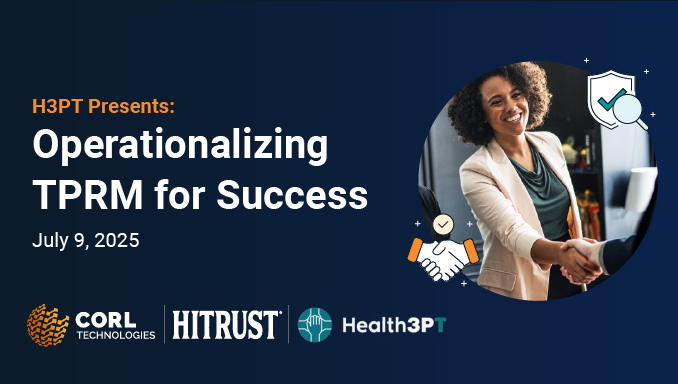
BlogTPRM
Top 10 Healthcare Supplier Risk Management Challenges Facing Providers in 2025
3 Minute Read
Read Top 10 Healthcare Supplier Risk Management Challenges Facing Providers in 2025TPRM
By CORL Technologies | April 8, 2025

In today’s evolving cybersecurity landscape, vendor risk management is more critical than ever. As organizations rely on a growing network of third-party vendors—cloud providers, software platforms, consultants, and contractors—the potential for exposure increases dramatically.
While many businesses focus on just a handful of high-priority vendors, this limited view leaves room for Risk Blindness—a dangerous oversight. In contrast, Risk Awareness means having full visibility into your vendor ecosystem to detect and mitigate potential threats before they escalate.
Risk Blindness occurs when organizations only assess their most visible or high-risk vendors, ignoring the broader web of third-party relationships that also pose threats. This narrow focus leads to major vulnerabilities, including:
Hidden Gaps in Security
Many vendors who appear low-risk still interact with sensitive systems or data. Overlooking these relationships can leave your organization exposed.
Cascading Risks
A breach in one overlooked vendor can ripple through your systems, affecting other third parties and your own operations.
Supply Chain Vulnerabilities
Threat actors increasingly target smaller, less-protected vendors to gain access to larger organizations. The SolarWinds breach is a stark example of how one compromised vendor can impact thousands.
Vendor Overlap
Without a complete vendor inventory, organizations risk engaging multiple vendors with similar weaknesses—doubling the exposure and complicating remediation efforts.
Risk Awareness is a holistic, proactive approach to third-party risk management. It goes beyond surface-level assessments to include all vendors, regardless of size or visibility.
Benefits of Risk Awareness:
Vendor coverage—the percentage of your third-party network that has been assessed—is a key maturity metric in any vendor risk management program.
Only 39% of organizations believe their third parties have sufficient safeguards to prevent a breach. Another 55% struggle to get complete risk data on their vendors. Without broad vendor coverage, you’re essentially managing risk in the dark. This lack of visibility creates blind spots that attackers are eager to exploit.
At CORL Technologies, we help organizations move beyond Risk Blindness and build proactive, high-visibility vendor risk management programs.
Our offerings include:
Risk Blindness can put your organization in jeopardy—but Risk Awareness puts you back in control. Don’t let unseen vulnerabilities compromise your security or compliance.
You can’t manage what you can’t see. CORL helps you identify, assess, and secure every vendor—across your entire third-party ecosystem.
Let’s Talk
Ready to enhance your vendor risk management program?
Contact CORL Technologies today and take the first step toward building a more secure, resilient future for your business.
Sources:

 CORL Technologies
CORL Technologies
CORL transforms TPRM chaos into clarity
CORL is a leading provider of vendor risk management solutions for the healthcare industry. CORL gets results by scaling organizational and vendor risk programs through our healthcare vendor risk clearinghouse solution, dashboard reporting that business owners can understand, and proven workflows that drive measurable risk reduction. CORL accelerates the speed of vendor risk assessments and holds vendors accountable for remediating risk exposures.
Related Posts

BlogTPRM
By CORL Technologies | August 14, 2025
3 Minute Read
Read Top 10 Healthcare Supplier Risk Management Challenges Facing Providers in 2025BlogCompliance
By CORL Technologies | June 24, 2025
5 Minute Read
Read Unlocking Vendor Assurance: A Deep Dive into CORL Technologies’ Assessment Suite
BlogTPRM
By CORL Technologies | May 19, 2025
2 Minute Read
Read More Than a Checkbox: Why Right-Sizing Vendor Risk Remediation Is the Key to Smarter TPRM
Webinars
WEBINAR H3PT Presents: Operationalizing TPRM for Success Join us for a focused, real-world conversation with healthcare security and risk leaders tackling today’s most pressing TPRM challenges. This session will bring together a small panel of experts for an insightful discussion on how to strengthen third-party risk programs in an evolving threat landscape. This won’t be […]